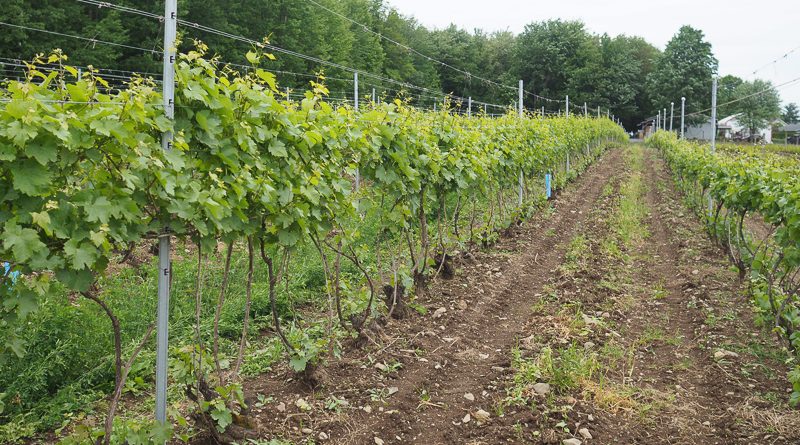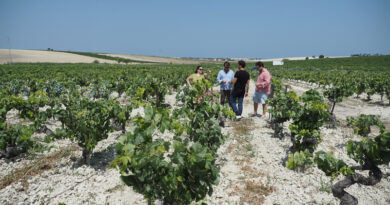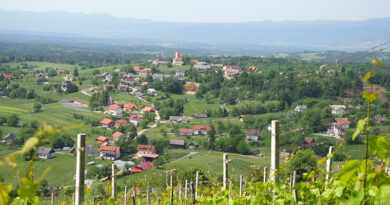Les Pervenches: stunning natural wines from Québec’s Chardonnay Pioneer
Once just a tourist industry making wines for local consumption, Québec’s wine scene is beginning to wake up, led by stunning wines like these natural, biodynamically farmed gems from Vignoble Les Pervenche’s. Jamie Goode visits to see how – despite the challenges of brutal winters and a short growing season – Mike and Véro manage it.
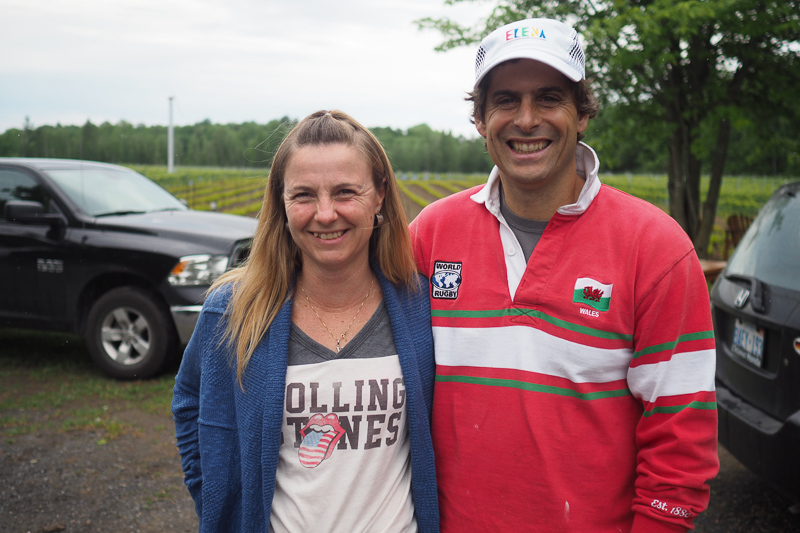
This was one of the highlights of my Quebec wine route tour. Véronique Hupin and Michael Marler’s Les Pervenches are the pioneers of biodynamic/organic winegrowing in Quebec, as well as leading the way with Chardonnay production. The first vines were planted here by previous owner Yves Monachon in 1991 (Seyval Blanc), followed by Chardonnay in 1992. Soils are sandy and well drained, and the woods to the north and west protect the vines from strong winds. The 7 hectare farm now has 4 hectares of vines.

So, the story. It was back in 1995 that Mike, who was in Toulouse on an exchange program, decided that working with the soil was to be his life. ‘I knew then that I was going to do something in agriculture,’ he said. ‘But I didn’t think it was going to be here.’
Four years later, Mike and Véro are looking for a vineyard. They find South America appealing. ‘We thought about Chile, so we went there in 1999, not really knowing what to expect,’ he recalls. ‘We had a few contacts and we went and saw some vineyards. It was kind of big. The small vineyards were 80 hectares. This isn’t the idea that I had, and it wasn’t much of a wine culture. Everything was exported, and there were very right-wing people running the show.’
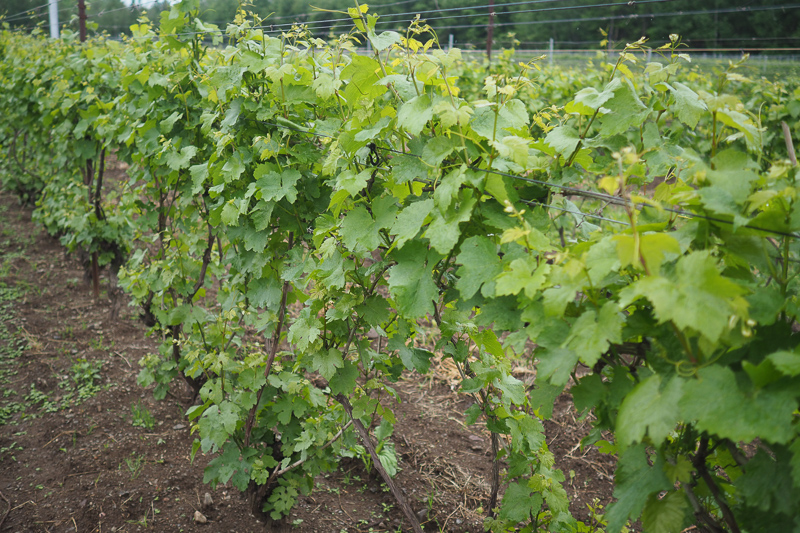
So they came back to Québec. ‘I’d done route des vins a few times here in Quebec, and I hadn’t really been impressed with anything,’ says Mike. ‘We did the tour again.’ There were some signs of life. ‘Maybe you have heard of Dietrich-Jooss,’ says Véro. ‘Victor Dietrich was from Alsace, and started a vineyard here. He was one of the first serious wineries here.’
They enacted plan B – find land near Véro’s family farm in Bromont, Québec. She intended to keep on working in the city, while Mike built up the vineyard. But they saw an advert for Les Pervenches, and bought the vineyard in April 2000, moving here in July. What attracted them is that it was one of the very few vineyards to have some vinifera. (More on that later.)
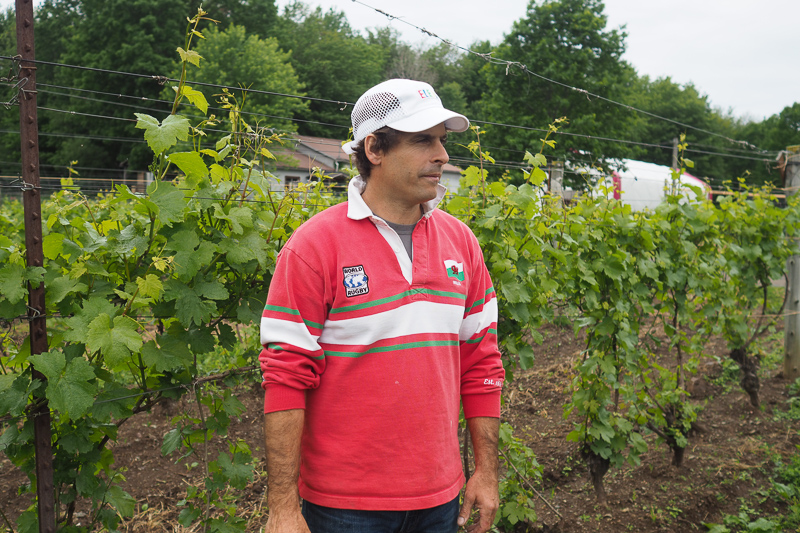
‘I saw this as a starting point: make this place better, learn the business and move on,’ says Mike. And they did put it up for sale in 2003/4 and got what he describes as a ‘comfortable’ offer in early 2006. But they refused it. At the time they were on a tour of France and Spain. While they’d not been all that positive about the Québec wine scene (‘there wasn’t much going on; it was a tourist industry’), things were changing, and by 2006 they’d begun to feel more positive. Having turned down the offer, they came back from their European trip with renewed resolve. ‘Our view was we’ll do what we want, and we won’t feel a victim of our climate,’ says Mike. ‘We will create the dream that we wanted to have elsewhere – but here.’
One of the things they did was plant Pinot Noir at high density, with vines 90 cm apart, with 1.35 row spacing. The idea was that if it didn’t work they could rip out a row and get back to where they were before. They also planted more Chardonnay and Zweigelt at the same density, but ended up pulling all of these close plantings out. ‘It became a jungle,’ says Mike. Instead, the original spacing but with a split canopy is the best way of dealing with the vigour. ‘Scott Henry was a much better way of controlling vigour than close spacing here.’
Here’s a short film of Mike in the vineyard, explaining the viticulture
Initially, they farmed chemically, but then became interested in organics, and began switching in 2004. By 2007 they were certified organic, and a year later, biodynamic. A later move was towards working naturally in the winery. The wines are now all naturally made without added sulphites.
The soils are sandy with some gravel. There are veins of schist that pop up, but this isn’t an important feature. There’s no limestone here.
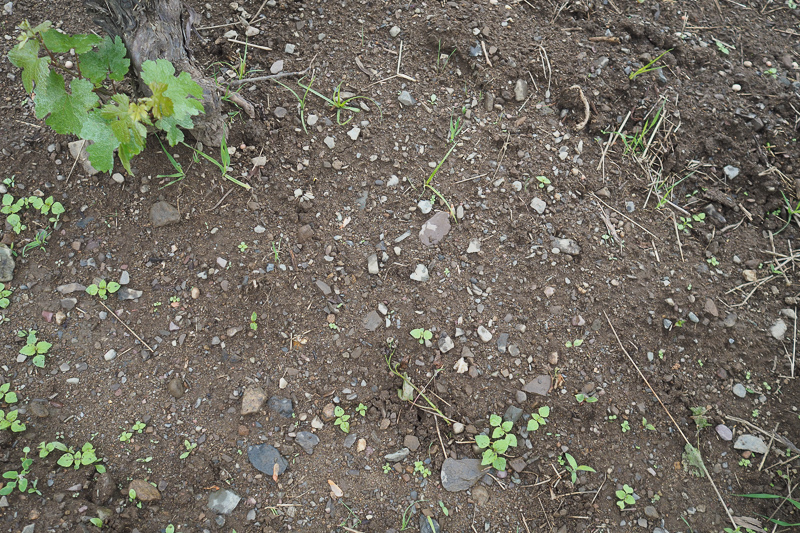
Viticulture here is complicated, especially with vinifera which is sensitive to winter cold. Winter is the big challenge, with its vine-killing lows. They began using the traditional technique of hilling over the vines – already pruned with the canes tied to a low wire – just before winter and then unearthing them in spring. But for Chardonnay, they lost a lot of buds, which simply rotted under the earth. The Chardonnay is the main reason Mike and Vero were attracted to this farm but once they’d signed the contract, the previous owner told them, a little after the fact, they’d have to rip the Chardonnay out because it doesn’t work. ‘I thought, we’re young, we can figure this out,’ says Mike.
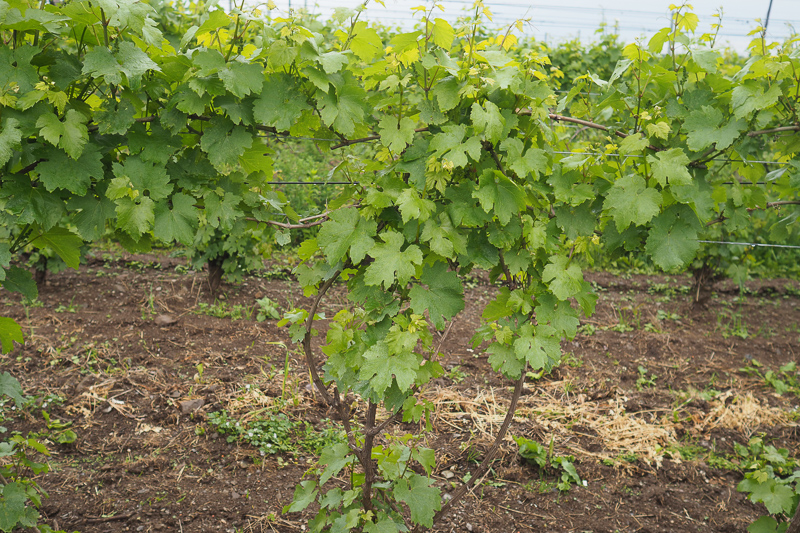
So they started asking other people how they might be successful with the Chardonnay. Some people in the region were using geotextiles, and Mike saw that Gilles Benoit had got Zweigelt and Cabernet Franc to survive under them. But he also saw there were all sorts of agrobacteria growing in the trunks causing crown gall. The buds were surviving the winter but the trunks were cracking and agrobacterium was getting in. ‘You can get the buds through the winter, but how are you going to get a long-term vineyard if you have cracking wood?’, asks Mike.
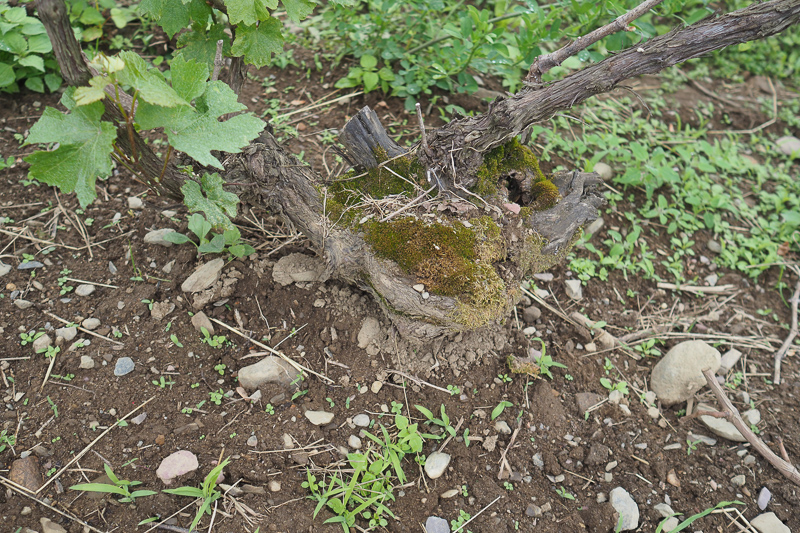
At that stage another colleague had just started using straw, and on its own this didn’t work. ‘The straw would just compact with the snow, and it was all a rotting mass,’ says Mike. ‘So, I thought, let’s look at the two systems and see what I can do with them. One of the problems is that Cabernet Franc and Zweigelt can be spur pruned, but Chardonnay can’t. It doesn’t work well. You have to use Guyot. If the buds touch the geotextile, they will freeze anyway. So there has to be some space. The first year we tried hanging wire, and the geotextiles above the wire. This didn’t work out: the crown gall got worse. So we decided to put hay in before the geotextiles, as an extra insulation layer but also as a cushion between the geotextile and the wire because all the canes were laying down.’

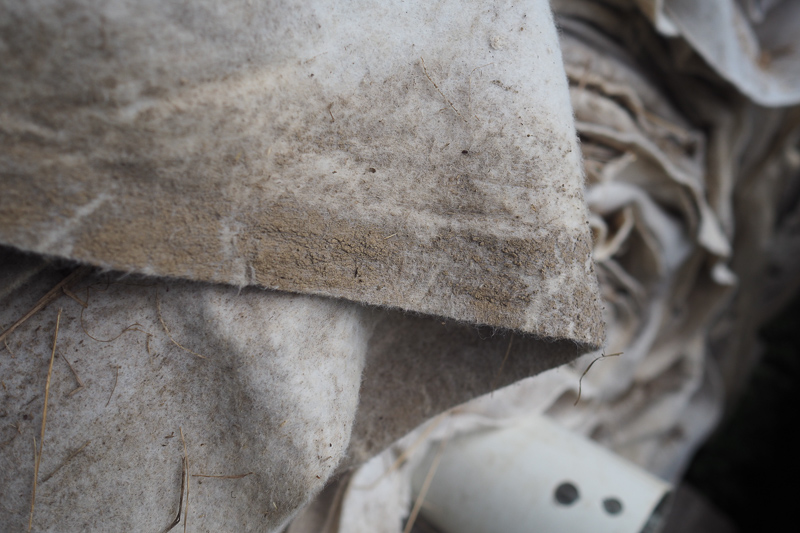
So in November, the vines are pruned, the whole vine is brought down, and then it is covered with hay. Then the geotextiles cover this. ‘The first trial of this was in 2007, and it worked well,’ he says. The canopy is a split sort, a Scott Henry system, which is a way of dealing with vigour and gives them decent crops. It also helps to open up the fruit zone. Planting density is 4000 vines/hectare.
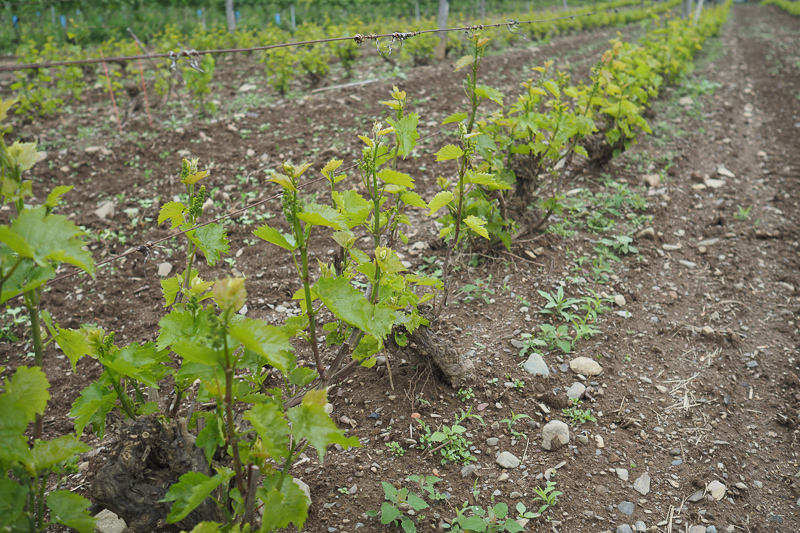
They still bury their Seyval Blanc, but in an ideal world they wouldn’t. It isn’t good for the soil to be burying and unburying every year. But although textiles would be better, Mike carries on hilling over Seyval because the vines can handle it OK. ‘It’s the mycorrhizal fungi and the life under the ground that we’d be looking to maintain by not burying,’ says Mike. With textiles, the cover crops come up earlier, too, because there’s no disturbance caused by unearthing the vines in spring.
Hilling over has some disadvantages. ‘The buds rot under the ground, depending on the soil and the winters,’ he says, ‘and also you are constricted to how you can prune after that. This way [geotextiles] you can do any type of pruning you want. If you are burying, you are pretty much stuck to using the new growth off the head, so you are stuck with a smaller vine. And if you are in a vigorous situation, you can’t use Scott Henry to counter the vigour because you can’t get it up.’
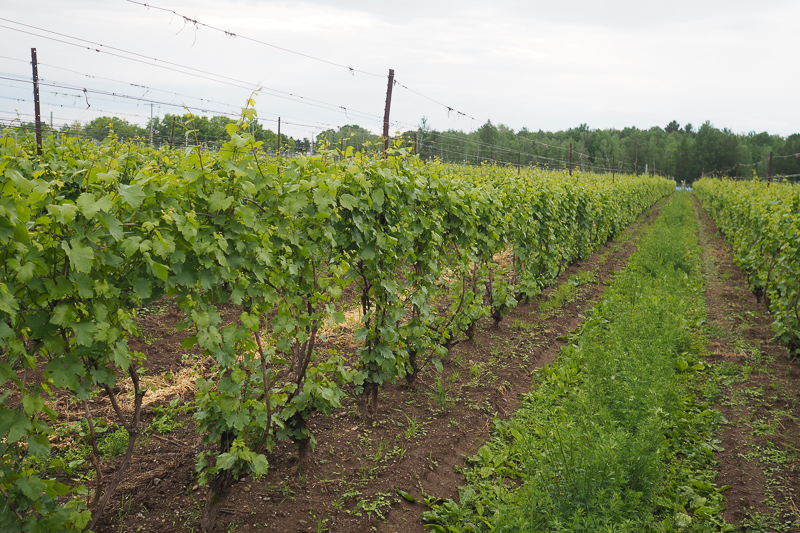
‘This year I am going to get my courage up and I’m going to seed under the vine,’ says Mike. Most organic farmers weed manually under the vines, but this is not best for soil life. He’s looking to grow the annuals buckwheat and phacelia. ‘Phosphorus is not mobile in the soil, and phacelia goes to phosphorus, picks it up, and moves this immobile element around the soil. What’s good about buckwheat is that it is competitive, filling in spaces. It does with potassium what phacelia does with phosphorus: pulling and dumping repeatedly, without disturbing the horizontal layers of the soil. For us to go through with a hoe is like having a hurricane going over our houses every two weeks. But I have to overcome all the education: we grow vines in rows, and it’s always nice and clean under the vines.’ In all, nine varieties of cover crop will be used, including alfafa which is a huge nitrogen producer.
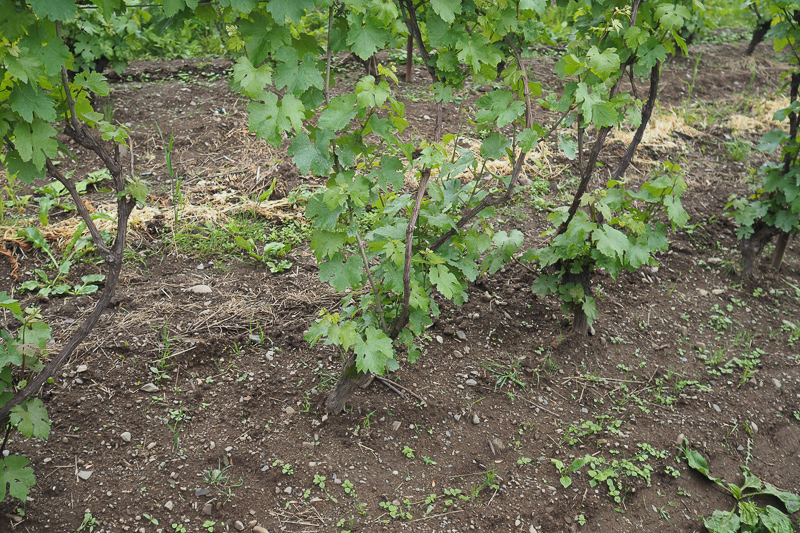
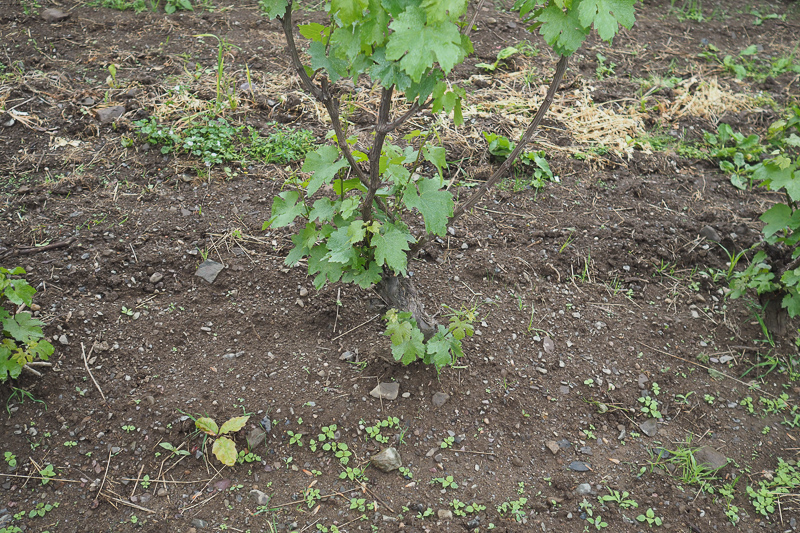
He’s also experimented with cloches over the vines, something suggested by Richard Smart, but it doesn’t work too well. ‘There’s enough sun and heat to do what we need here,’ he says. The idea was it would encourage ripening and keep disease spores off.
The approach in the winery is natural. In 2007 they made a Chardonnay without chaptlization and bottled it at 10.5% alcohol. ‘It was crystal clear, pure and beautiful,’ says Mike. So they stopped chaptalizing in 2010. They made their first wine without sulfites in 2008, but did some filtration. The following year they made a completely natural wine. In 2016 they divided the production: half had a bit of sulfur dioxide and some filtration, and half didn’t. A green dot on the bottles indicates which had not additions or manipulation. ‘The sulfur dioxide makes the acidity come through,’ says Mike. ‘We are in the balance of acidity in Québec. From 2017, none of the wines have sulfites added.
The reds are all hand destemmed. ‘As soon as anything goes through a machine you get vegetal aromas,’ says Mike, referring specifically to Quebec grapes. ‘The berries are almost intact so you get some semi-carbonic.’
On Seyval: ‘Seyval is a great grape. It just got sabotaged for so many years. People picked it at 9.5% potential alcohol, chaptalized it and deacidified, did no malolactic and added sugar at bottling.’
A lot of the Chardonnay is fermented in plastic eggs. ‘It has a huge effect,’ says Mike. ‘The form works: it stays cloudy much longer than the barrels.’
These wines have a strong local demand, and sell out in just one afternoon when they are released.
THE WINES
Les Pervenches Seyval-Chardonnay 2017 Québec, Canada
11.5% alcohol. Stony, with a reductive nose, showing supple bright tangerine and pear fruit, as well as a bit of melony richness. Light and expressive. Grainy and pure, and a little bit salty. 90/100
Les Pervenches Seyval-Chardonnay 2018 Québec, Canada
88% Seyval, 15% Seyval. Seyval has a bit of skin colour, and they do a bit of carbonic maceration. Stony and mineral with lovely texture and weight, with amazing texture. Has lovely precision with amazing texture. This has lovely precision with a juicy quality and a slight salinity. Very precise. 92/100
Les Pervenches Seyval ‘Mac Pel’ 2018 Québec, Canada
Mac Pel stands for maceration pelliculaire (skin macerated). This is half hand destemmed and half machine. Lovely weight here with citrus, pear and a bit of bite. Some tannins with lovely purity. Two weeks skin contact. Shows notes of fine herbs and green tea. A lovely wine. 93/100
Les Pervenches Chardonnay Le Couchant 2018 Québec, Canada
From the old block (1991). Stony and citrussy with a touch of cream. Lovely fruit here. Very mineral and taut with nice depth. This ages really well, too. Very fine. 94/100
Les Pervenches Chardonnay Les Rosiers 2018 Québec, Canada
Very Jura-like. Stony and fine and pure with a mineral quality. So textural with astonishing fine-grained texture and a bit of salinity. Lemons, pears. So refined. 94/100
Les Pervenches Chardonnay Le Feu 2018 Québec, Canada
A nursery mistake meant that one in 25 of the plants in this block are the Chardonnay Musqué clone, which gives a lot of terpenes. This is linear, stony and very fine with lovely precision and appealing pear skin, lemon and crystalline fruit notes. Has precision and elegance. 93/100
Les Pervenches Macpel 2018 Québec, Canada
This is a blend of Pinot Gris, Seyval, Zweigelt and Pinot Noir. It’s a cloudy pink colour, and has some earth, beetroot and herb character. Savoury and herbal and quite distinctive, but some of the earthy flavours are a bit off. 82/100
Les Pervenches Pinot Zweigelt 2018 Québec, Canada
70% Pinot Noir: mostly hand destemmed, no pigeage, plus a portion with full two week carbonic maceration. 30% Zweigelt: 14 days carbonic maceration with stems. This has a lightness to it: it’s supple with lovely red fruits. Very expressive and elegant with some green hints. Lovely wild strawberries and red cherries. Faint vegetal and earthy notes adding savouriness. Smashable. 91/100
Les Pervenches Bon Bon Bulles 2018 Québec, Canada
70% Chardonnay, 30% Zweigelt. Looking for 4 bars of pressure and no residual sugar. Ha herbs and earth and nice texture. Fresh and sappy with some cherry and pear fruit and subtle earthy hints. Lovely stuff. 90/100
Thanks to fellow wine journalist Nadia Fournier for arranging this series of Québec visits.
The geotextiles are made by Soleno Textiles https://solenotextile.com/en/
Website: www.lespervenches.com
150 Chemin Boulais, Farnham, J2N2P9 Québec, Canada
Find these wines with wine-searcher.com

